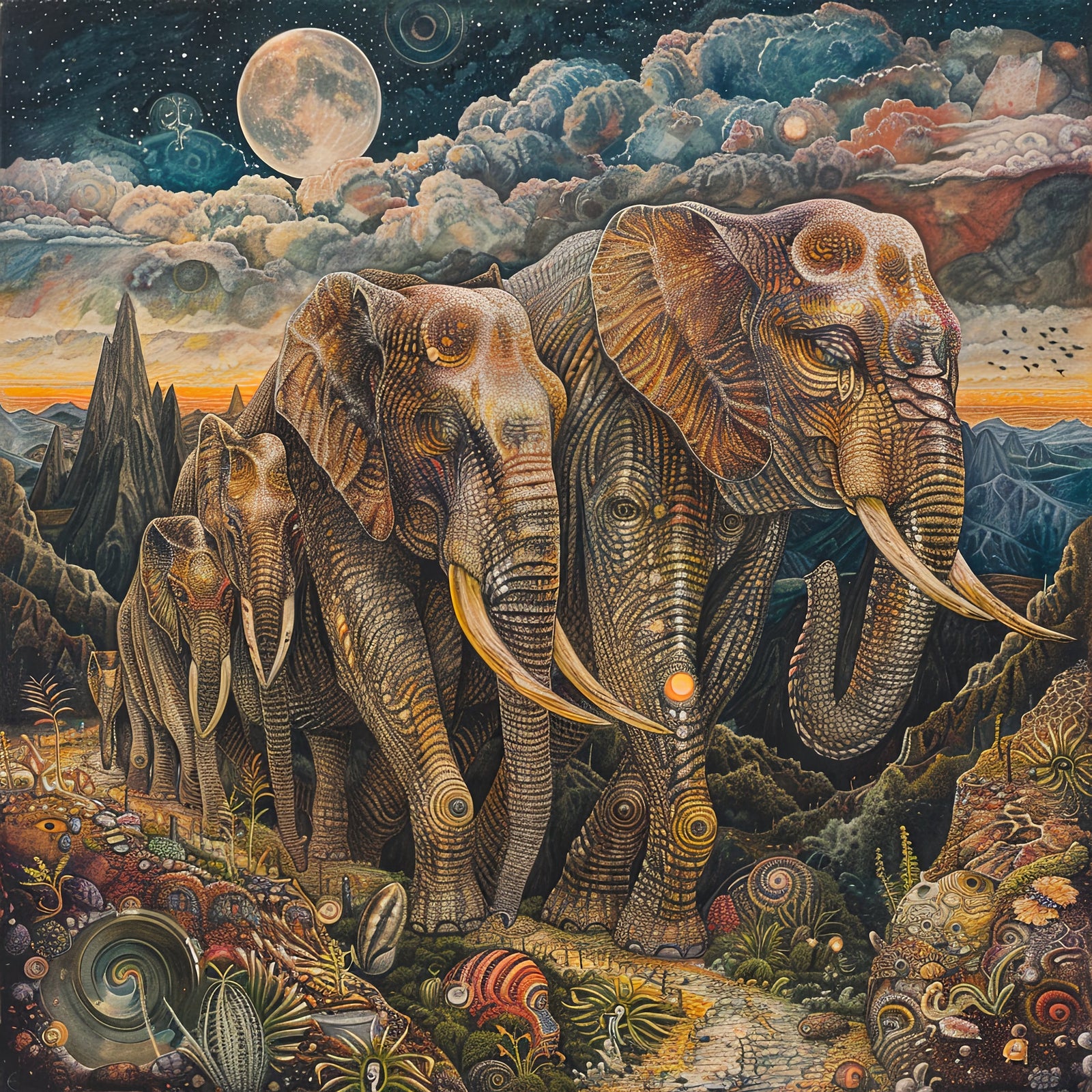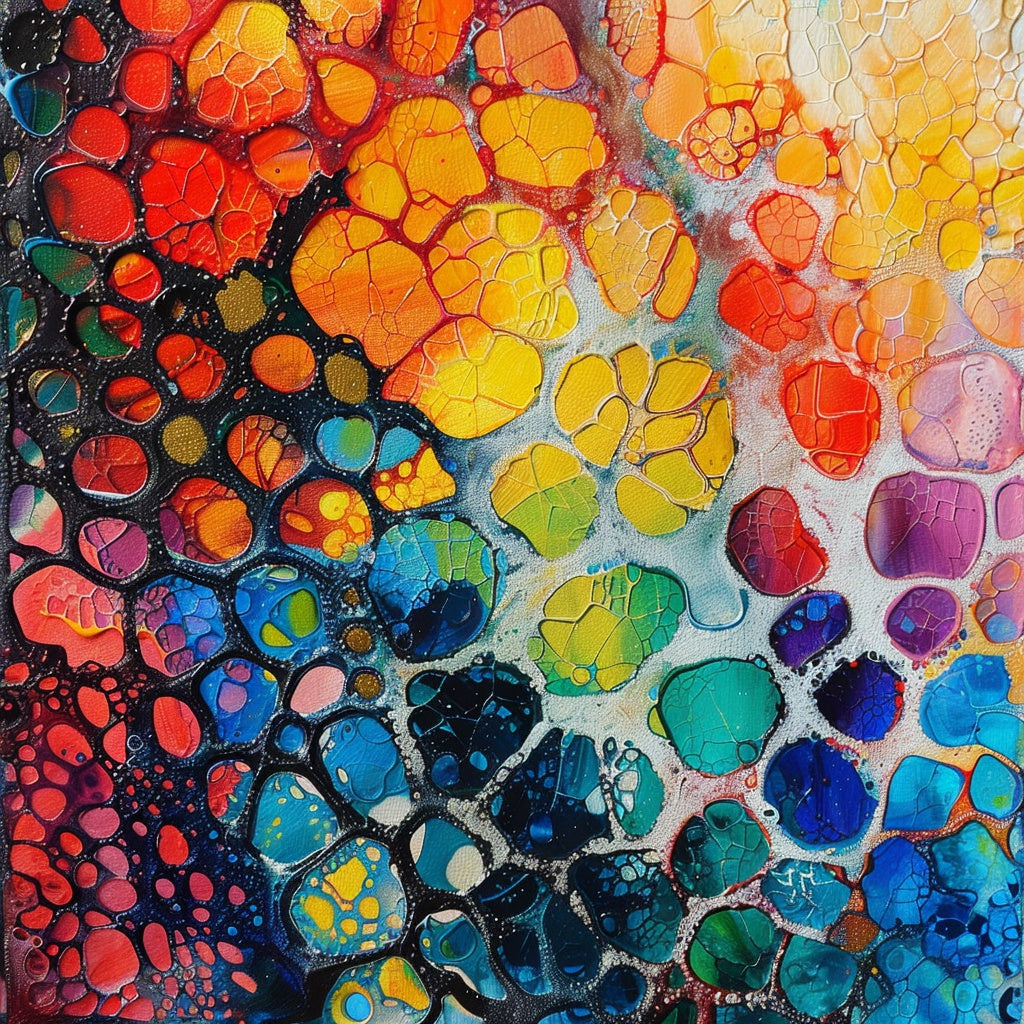AI and Art: A New Era of Creativity
The intersection of artificial intelligence and art is rapidly evolving, presenting both exciting possibilities and complex challenges. Technology has consistently reshaped artistic practices from computer-generated graphics in the 1950s to today's sophisticated AI art generators. This blog post explores AI's history, applications, and potential in art, offering a comprehensive look at this fascinating field.
Table of Contents
- A Brief History of AI in Art
- AI as a Tool for Artists
- Applications of AI in Art and Architecture
- Successful Collaborations Between Human Artists and AI
- AI Art Generators: A Comparison
A Brief History of AI in Art
The use of computers in art dates back to the 1950s and 1960s, with early experiments in computer-generated graphics and algorithmic art. Artists like Harold Cohen and Manfred Mohr pioneered the use of computers to create abstract, geometric works in the 1970s. The development of AI in the 1980s and 1990s led to more sophisticated forms of computer-generated art, including evolutionary algorithms capable of producing complex, organic forms and animations.
The rise of the internet and digital media in the late 1990s and early 2000s further accelerated the use of technology in art, giving rise to new forms of digital art such as net art and software art. In 1965, the first exhibition of computer-generated art was held in Stuttgart, Germany, marking an early milestone in the use of technology for artistic expression. Today, AI is making its mark on the art world, with AI art generators producing stunning visuals in seconds. For example, the "Portrait of Edmond de Belamy," an AI-generated artwork, sold for $432,500 at a Christie's auction in 2018. This demonstrates the growing impact of AI on the art market and its potential for new forms of artistic expression.
AI as a Tool for Artists
AI is a powerful tool for artists, enhancing creativity and opening new avenues for artistic expression. It can generate unique ideas and concepts, helping artists to overcome creative blocks. AI tools can also assist with tasks such as color selection, image manipulation, and creating drafts, freeing artists to focus on higher-level creative decisions. This allows artists to work more efficiently and produce art more quickly.
Enhanced Creativity
AI can enhance human creativity by automating mundane tasks, allowing artists to focus on higher-level creative decisions. For example, AI algorithms can explore different artistic techniques, such as style transfer, which involves combining one image's artistic style with another's content. Additionally, AI tools can generate variations of existing artwork, providing artists with new ideas and perspectives. This collaborative approach allows artists to leverage the strengths of AI while maintaining their creative vision.
Increased Accessibility
AI art generators can democratize art creation, making it accessible to individuals with limited artistic skills or resources. This empowers individuals to express themselves creatively and engage with art in new ways. AI tools can also help those with physical limitations create art they might not have otherwise been able to produce. The user-friendly interfaces of many AI art generators make it easy for anyone to experiment with different styles and techniques, fostering a more inclusive art community.
New Artistic Mediums and Techniques
AI facilitates the creation of new art forms and mediums, including interactive installations, virtual reality experiences, and generative art. This can push the boundaries of artistic expression and expand the possibilities of art. For example, artists use AI to create immersive installations that transform data into mesmerizing visual and auditory experiences. AI also allows artists to experiment with unconventional mediums and explore uncharted territories, leading to innovative art forms that were previously unimaginable.
Applications of AI in Art and Architecture
The applications of AI in creative fields extend beyond traditional art, reaching into architecture and other design disciplines. In architecture, AI is used to generate and optimize building designs, analyze data, create energy-efficient designs, and aid construction planning. AI also contributes to smart buildings that adjust their settings based on occupancy, weather, and time of day.
AI in Architecture
AI can generate and optimize building designs by analyzing various factors such as building usage, location, and environmental considerations. This allows architects to create more efficient and sustainable structures. Furthermore, AI can help create more energy-efficient designs, reducing waste and costs by optimizing resource use. AI can analyze data such as material costs, availability, and construction schedules in construction planning to streamline the building process. The ability of AI to adapt and respond to various inputs makes it a valuable tool for architects looking to create innovative and functional spaces.
For example, architects are using AI to create smart buildings that adjust their settings based on real-time data. This includes adjusting lighting and temperature based on occupancy levels and weather conditions. AI can also create personalized user experiences, such as customized lighting and soundscapes. This level of adaptability is revolutionizing architectural design and construction, leading to more efficient, sustainable, and innovative buildings.
AI in Art Restoration
AI is also a valuable tool in art restoration. By analyzing the style and technique of the original artist, AI can help art restoration experts by producing images of what the original, undamaged artwork may have looked like. This can help to guide restoration efforts and fill in gaps in damaged paintings, sculptures, and other art forms. The use of AI in art restoration is helping to preserve cultural heritage for future generations. AI algorithms can precisely analyze damaged artworks, providing restorers with a deeper understanding of the original pieces. This ensures that the restoration process is more accurate and less intrusive.
Successful Collaborations Between Human Artists and AI
Despite the debates, there are numerous examples of successful collaborations between human artists and AI, demonstrating the potential of AI to enhance human creativity. These collaborations lead to innovative art forms and push the boundaries of artistic expression.
Examples of Successful Collaborations
- Sougwen Chung: This artist uses AI-powered robotic arms to create collaborative drawings and paintings, exploring the relationship between human and machine creativity.
- Refik Anadol: This artist creates immersive installations using AI algorithms to transform data into mesmerizing visual and auditory experiences.
- Manas Bhatia: This architect uses AI to generate surreal digital images for his conceptual projects, envisioning futuristic buildings and urban landscapes.
- Taryn Southern: This musician collaborated with AI to co-write and co-produce her album "I AM AI," showcasing the potential for AI in music composition.
These collaborations highlight the potential for AI to be a valuable tool for artists. By working together, humans and AI can push the boundaries of creativity and develop new art forms. These successful collaborations demonstrate that AI in art is not about replacing human artists but about enhancing their creative abilities and expanding the possibilities of art.
AI Art Generators: A Comparison
Several AI art generators have unique features and capabilities. These tools allow users to generate images from text prompts or existing images. The table below provides an overview of some popular AI art generators and their key features:
| AI Art Generator | Description | Key Features | Access/Cost |
|---|---|---|---|
| DALL-E 2 | Creates realistic and creative images from text prompts | Can blend styles and concepts, generates high-quality visuals | Available through Shutterstock, has a credit system |
| Midjourney | Generates images from text descriptions | Discord-based access, strong community aspect | Free and paid subscription plans |
| Stable Diffusion | Creates images from text descriptions with various styles | Open-source, offers extensive customization options | Free to use |
| WOMBO Dream | Mobile-friendly AI art generator | User-friendly interface, various style options | Available as a mobile app |
| NightCafe Creator | Generates AI art from text or image prompts | Budget-friendly plans, extensive customization | Credit system for cost-effective use |
These tools vary in terms of their accessibility, features, and cost, making it important for users to choose the one that best suits their needs and creative goals. The diversity of AI art generators allows for a wide range of artistic exploration and experimentation.
Conclusion
The integration of AI into the art world is ushering in a new era of creativity and innovation. AI enhances human creativity by automating tasks and enabling the exploration of new mediums, and it makes art creation more accessible and allows for new forms of expression. By embracing AI as a collaborative tool, artists can leverage its strengths to enhance their creative processes and explore uncharted artistic territories. The key is to recognize the opportunities presented by AI while continuing to value human creativity and artistry. As AI continues to evolve, the possibilities for its application in the art world are boundless.
The collaboration between humans and AI in art represents a powerful force for innovation and creative expression. By embracing the potential of this technology, we can create a future where humans and artificial intelligence work together to expand the boundaries of art. This is not the end of traditional artistry but rather the beginning of a new collaborative era that can enrich and expand the creative process.
Footnotes
- AI and Art Unit 7 – AI-Human Collaboration in Art - Fiveable
- 10 Mind-Blowing Examples of AI-Generated Art - ClickUp
- Exploring the Benefits of AI Art: Revolutionizing Creativity - Artsmart.ai
- Advantages and Disadvantages of AI in the Art World - Artezaar.com
- The Benefits & Downfalls of AI and Art: Faculty Blog by Aaron Winey - Grace College
- These Artists Are Using AI as a Creative Partner. See How! - Worklife VC
- Artificial Intelligence versus/& Human Artists: AI as a Creative Collaborator in Art
- Artificial Intelligence Artwork: Revolutionizing Creativity with AI | Starleaf Blog
- Improve Digital Artist Productivity With Generative AI | GCU Blog
- Embracing Creativity: How AI Can Enhance the Creative Process | NYU SPS
- Human-AI collaboration for novel, artistic creativity - Artificial Intelligence
- Using AI Tools to Create Art - AI Tools for Students - Research Guides
- These Artists Are Using AI as a Creative Partner. See How! - Worklife VC
- Art created by artificial intelligence: "Frightening and fascinating all at the same time"
- Artificial Intelligence Artwork: Revolutionizing Creativity with AI | Starleaf Blog
- Embracing Creativity: How AI Can Enhance the Creative Process | NYU SPS
- AI-Generated Art: How Can Visual Artists Navigate This New Frontier of Creativity?
- Human-AI collaboration for novel, artistic creativity - Artificial Intelligence



Leave a comment (all fields required)